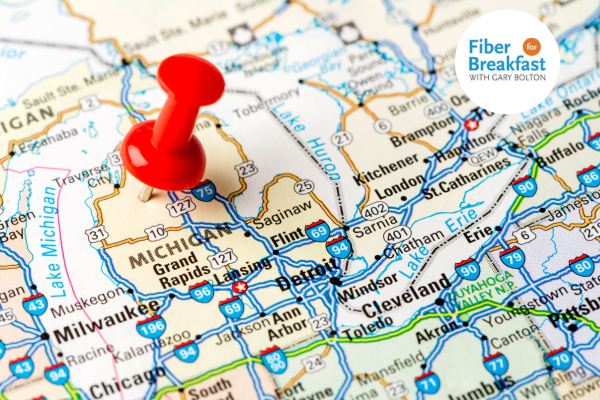Building Broadband for the Long Haul
With around $52 billion of federal broadband money flowing into underserved and unserved communities over the next decade between federal pandemic relief and the infrastructure law, will local and state governments go for quick fixes or long-lasting, future-ready solutions capable of generating significant economic benefits over decades? There’s a lot to consider.
There seems to be a consensus outside of the FCC that 100 Mbps symmetrical broadband speeds should be the benchmark for new projects while the agency seems stuck with Ye Olde 25/3 Mbps as the minimum with a 50/5 Mbps “baseline,” per the RDOF auction guidelines. Everyone working and schooling at home during most of 2020, regardless of location, could tell you can’t effectively run multiple videoconference sessions at 25/3 or 50/5.
More than two decades ago, former FCC Chairman Reed Hundt called for 100 Mbps symmetrical speed to be the United States broadband standard, with the 2010 National Broadband Plan re-upping the idea. At this point, stop-gap investments in legacy infrastructure such as copper or early-generation cable to meet outdated minimums is just throwing good money away.
Fiber is the only option for long-lasting future-lasting broadband infrastructure and one of the telecom industry’s biggest sectors has finally come around to adopt it. The cable industry has nowhere else to go but to adapt fiber to fully delivery their 10G initiative. Already, greenfield builds are all glass, no coax cable in sight while Tier 1 and Tier 2 providers realize they need to replace their legacy plant in order to compete with fiber competitors, reduce electrical consumption, and get rid of all the splitters and other analog point-of-failure equipment built up over the years in the quest to deliver higher-speed broadband services every three to four years.
The cable industry also realizes new fiber means new opportunities, with the simplest being able to delivery gigabit-class symmetrical speeds to businesses of all sizes and the ability to lease dark fiber to enterprises and government agencies that prefer operate dedicated networks for security and performance reasons.
Alleged competitors – fixed broadband wireless and 5G services – don’t open their doors for business without fiber providing the gigabit speeds necessary to provision cell tower service and broadband to FBW distribution hubs. Neither can provide affordable symmetrical gigabit speeds to residences at this time and are unlikely to do so soon with few exceptions.
Fiber is the basis for building and operating utility SmartGrid and municipality SmartCity networks, providing the desired combination of speed, low-latency, and security for delivering fewer and shorter power outages, better traffic management, real-time monitoring of runoff water and sewer systems, enhanced public safety, and the ability to grow into autonomous vehicle management systems.
Finally, the emergence of Smart Agriculture combining IoT, robotics, drones, AI and the cloud will only increase the demand for high-speed rural broadband. Real-time data in combination with machine learning can increase the productivity of farmers through more efficient usage of water, fertilizer, and pesticides on crops, proactively generate alerts when machines need to be maintained, quickly diagnose broken machinery and vehicles, and provide key information on the health and best time to harvest crops.
Provisioning fiber as a long-term building block for economic benefit with the ability to encompass uses we are only beginning to see is the best investment broadband funding can provide.




